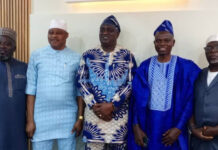By Dr. Amal Almoualed
“Fashion is not something that exists in dresses only. Fashion is in the sky, in the street, fashion has to do with ideas, the way we live, what is happening.” — Coco Chane
He/she is Arabic, Asian, or African. He/she is an optimistic, pessimistic yet energetic person, is a fashionable trendy person with a unique representation of his/her culture and societal values, etc. As a stranger when we meet up, and or travel to any country, we get identified partly from how we dress and adopt fashion trends and patterns to represent us; by us, I mean our personal and cultural identity.
On this topic, Miuccia Prada stated, “What you wear is how you present yourself to the world, especially today when human contact is so quick. Fashion is an instant language.” With that in mind, we ought to admit either we are interested in fashion or we are not. Fashion is a powerful mode of communication that represents who we are, which part of the world we belong to, how attached we are to the cultural values we grew up with, and the extent to which we identify with our national traditions. In correlation with this, Social Identity Theory, as coined by Henri Tajfel and his student John Turner (in the 1970s), defined identity as an individual’s sense of who they are based on which group they belong to. It chiefly refers to identities shaped in the context of a group. Reflecting on this, we observe that fashion hones individuals’ personal and cultural identity. It helps us to manifest our personal and cultural identity. This means that how we dress not merely reflects our own personal and cultural identity, but also affects how others perceive us.
Indeed, fashion and the consumption of clothing not only affects the way we perceive ourselves and others, it also affects our mood, confidence, and personality. The “Enclothed Cognition” concept, introduced by Hajo Adam and Adam Galinsky in 2012, evaluates the intersection between attitude and clothing according to two factors: the symbolic meaning of the clothes to the wearer and the physical experience of wearing them. They discovered that wearing an item of clothing has the potential to alter someone’s mood and performance, and others’ perspectives of the wearer.
This is supported by Amber Rules, the psychotherapist and clinical counselor, who claimed that wearing an item of clothing alters the wearer’s psychology. For instance, wearing athletic or sports clothes makes a person feel more active and want to exercise, and wearing bright colors puts a person in a positive frame of mind. Meanwhile, wearing formal or professional clothes helps us to feel powerful and authoritative. Relatedly, Dawnn Karen, a Psychology Professor at New York’s Fashion Institute of Technology, invented the term “dopamine dressing” to express the way in which wearing clothes in certain colors can encourage different mindsets. Karen identified three concepts: “Mood Illustration Dress” meaning dressing to maintain your present mood; “Mood Enhancement Dress” to optimize your current mood; and “Repetitious Wardrobe Complex” relating to wearing the same outfit or aesthetic daily to maintain your mood and boost productivity.
Accordingly, it can be asserted that fashion affects our behavior, attitude, personality and mood, confidence and approach to communicating or interacting with others. The psychology of fashion and how we dress in certain clothes or styles play a pivotal role in conveying and reading the details of an individual’s personality. Personally, I can recall an instance where I attended a social gathering for a professional purpose and was wearing bright colors, and another professional was sitting alongside me wearing dark colors. Other participants who were sitting next to us commented that they imagined me to be an optimistic person and the other rather depressed, based only on the colors we were wearing. Here I argue that our impression of strangers and how we perceive them may be affected by the way they look and dress, and it might be accurate, but should not be considered a definite and final judgment. It is only through reading other people throughout our relationships that we can truly know them — work colleagues, spouses, friends, or neighbors.
A new young generation of citizens arises at the global level with the skills to consume fashion, expressing their personal and cultural identities with respect to and consideration of their cultural values and norms. This necessitates a new generation of fashion journalists able to report creatively on fashion trends and patterns that represent countries’ cultural and social values. Global understanding is required to open the eyes of people in other parts of the world. This would disrupt stereotypes about certain cultures and resolve misconceptions that inhibit communication, actions and reactions to others at local or international events.
Journalists need to utilize their professional journalistic storytelling skills to educate the next generation of citizens regarding the power of fashion to represent their identities personally and culturally, locally and internationally with pride in their countries’ cultures, histories and values, without forgetting to be authentic, and true to their unique identities. Moreover, fashion journalists are responsible for heightening citizens’ awareness that less is more, urging them to focus firstly on the quality of their manners and their fashion appearance secondly. In that regard, we need to admit that developing a new generation of fashion journalists or media professionals would also allow us to target digital audiences, underlining that fashion is a powerful tool with which to read someone’s personal and cultural identity, where they grew up, how they perceive the world, and how they perceive others who are different to them not merely the way they dress, but how they think, have been educated, act and react.
Fashion can serve as a tool to help us uncover another person’s individual and cultural identity; however, the richness of someone’s identity cannot simply be determined by their appearance and fashion choices. The dress can only help us to read someone superficially, possibly facilitating easy conversation; a deeper connection and understanding requires time spent observing and connecting with them.
— Dr. Amal Almoualed is a Journalism Assistant Professor in the Media Department at Umm Al-Qura University. She has a doctoral degree in Journalism and Communication from Bournemouth University, UK.


























